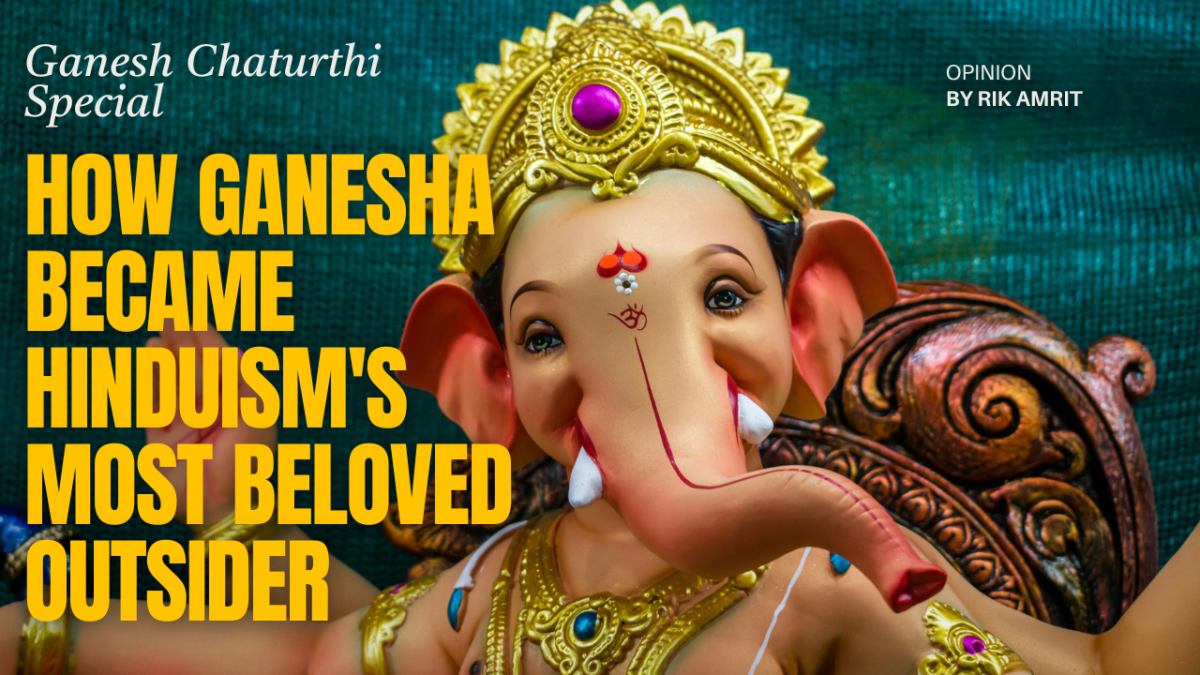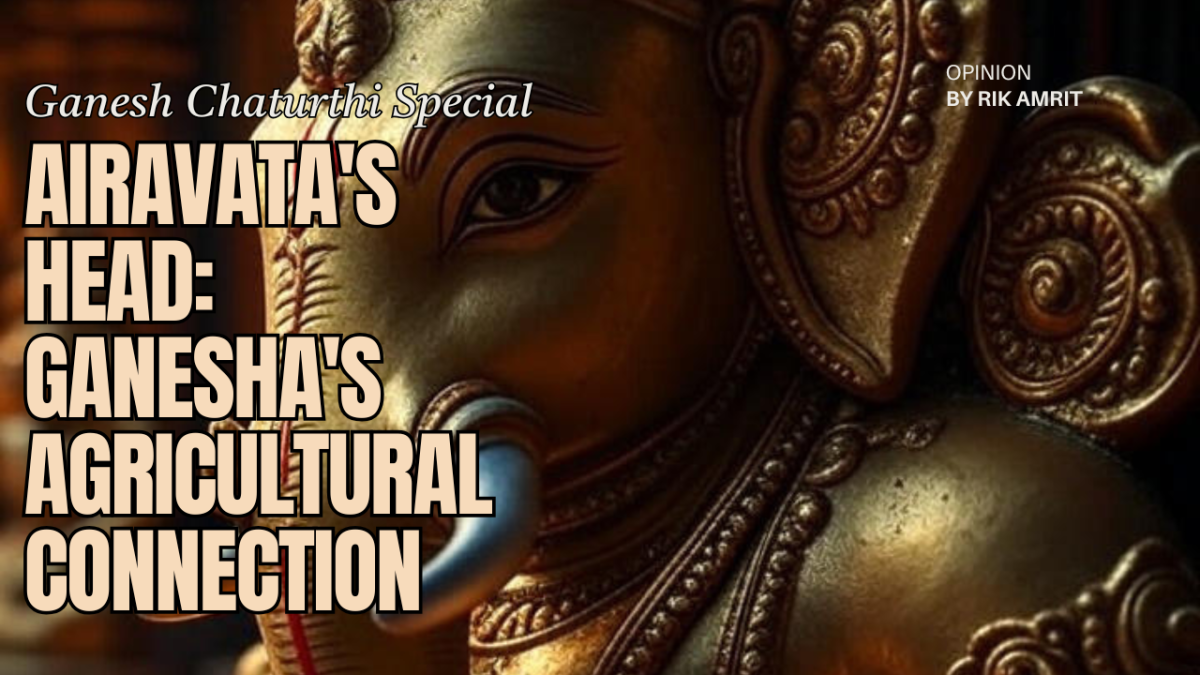As our own global civilization struggles with questions of identity, belonging, and meaning across cultural boundaries, Ganesha's journey from local spirit to universal symbol offers unexpected insights. In an age of artificial intelligence and genetic engineering, when we're creating new forms of hybrid existence, the ancient wisdom embedded in the elephant-headed god's impossible form may prove more relevant than ever. The question isn't whether Ganesha exists, but whether we can learn to see ourselves—fractured, contradictory, yet somehow whole—reflected in his knowing smile.
In a temple courtyard in Mumbai, a businessman touches his forehead to a clay elephant and whispers a prayer before signing a contract. Halfway around the world in Japan, a young couple burns incense before twin elephant-headed figures locked away behind shrine doors, hoping for prosperity in love. From the ancient rock fortresses of Tamil Nadu to the monasteries of Tibet, one deity transcends boundaries that divide nations, religions, and centuries: Ganesha, the elephant-headed god who shouldn't exist, yet has become perhaps the most universally beloved figure in the Hindu pantheon.
The very idea of Ganesha presents a mythological puzzle that reveals something profound about how humans create meaning from contradiction. Here is a god who removes obstacles yet creates them, who embodies both material wealth and spiritual wisdom, who is simultaneously the most approachable and the most mysterious of deities. His form defies logic—an elephant head grafted onto a human body—yet this impossible combination has captured imaginations across cultures for over fifteen centuries.
The Evolution of an Icon
Ganesha's rise from regional folk spirit to global religious phenomenon represents one of the most dramatic transformations in religious history. The deity we recognize today bears little resemblance to his ancient origins. In Vedic literature, dating to 1500 BCE, "Ganapati" appears merely as a title meaning "leader of groups," with no elephant imagery whatsoever. The Vinayakas of early Hindu texts were troublesome forest spirits to be feared and appeased—malevolent beings who created obstacles rather than removed them.
The transformation began around the 5th century CE, when these disparate elements—the Vedic Ganapati, the troublesome Vinayakas, and the prosperity-bringing Yakshas of folk tradition—began to coalesce into a single figure. By the 10th century, the familiar iconography had emerged: pot-bellied, elephant-headed, riding a mouse, holding an axe and a noose, with a snake around his waist and a broken tusk serving as a stylus.
This metamorphosis wasn't merely aesthetic—it represented a fundamental shift in Hindu religious consciousness. As scholar Paul Courtright notes in his seminal study, Ganesha's evolution mirrors Hinduism's own transformation from an elite Vedic ritual tradition to an inclusive devotional religion accessible to all social classes. The troublesome spirit became the beloved remover of obstacles precisely as Hinduism itself was removing the obstacles that separated the sacred from the everyday.
The Symbolism of Synthesis
Ganesha's hybrid form functions as a visual philosophy, encoding complex theological concepts into immediately recognizable imagery. The elephant head, representing material reality with all its power and passion, sits atop a human body symbolizing intellectual capacity and spiritual potential. This isn't merely decorative symbolism—it's a sophisticated theological statement about the relationship between matter and spirit.
The elephant, as Pattanaik observes, traditionally symbolized both prosperity and deception in Indian culture. The creature's massive appetite and sexual potency made it a symbol of unrestrained material desire, while its habit of "showing one set of teeth but chewing with another" marked it as a creature of duplicity. Yet when this potentially dangerous animal nature is guided by human consciousness—represented by the human body—it becomes a force for good.
Every element of Ganesha's iconography operates on this principle of transformed opposition. The mouse he rides represents the very problems he solves—small, persistent troubles that gnaw away at human peace. By riding the mouse rather than being overwhelmed by it, Ganesha demonstrates mastery over life's minor but persistent obstacles. The snake around his belly, traditionally a symbol of time and regeneration, shows how he contains and controls the forces of change and decay.
Even his famous broken tusk carries multiple layers of meaning. In various traditions, it was broken by Parashurama's axe, Krishna's brother Balarama's pestle, or his own brother Kartikeya in a duel. But regardless of how it broke, the tusk serves as his stylus for writing the Mahabharata, transforming an instrument of violence into a tool of wisdom. The broken tusk also represents sacrifice—Ganesha gave up his perfect form to serve humanity's need for stories and meaning.
The Politics of Devotion
Ganesha's modern prominence cannot be understood without examining the political dimensions of his worship. The deity's association with Maharashtra and the Maratha Empire gave him a distinctly regional character that later nationalist leaders would exploit. When Bal Gangadhar Tilak transformed the private festival of Ganesh Chaturthi into a public celebration in 1893, he wasn't merely organizing a religious festival—he was creating one of India's first mass political movements.
Tilak understood that colonial authorities couldn't easily ban religious gatherings without appearing oppressive, making Ganesha festivals ideal covers for nationalist organizing. The deity's image as the "remover of obstacles" took on new meaning in the context of British rule—what greater obstacle to overcome than foreign domination? The crowds that chanted "Ganpati Bappa Morya" weren't just expressing religious devotion but asserting cultural independence.
This political dimension helps explain Ganesha's particular appeal to marginalized communities. Unlike the high-caste Vedic deities who required Sanskrit mantras and elaborate rituals, Ganesha welcomed worship in local languages with simple offerings. His associations with trade and commerce made him especially popular among merchant communities who were gaining economic power but lacked social status in traditional hierarchies.
The Global Journey
Perhaps most remarkably, Ganesha's influence extends far beyond Hinduism's traditional boundaries. As Buddhism spread along the Silk Road, Ganesha traveled with it, taking on new forms and meanings in each culture. In Tibet, he appears both as benevolent Maha-Rakta-Gana-Pati and as a malevolent spirit trampled by Buddhist deities—representing both the obstacles that meditation removes and the persistent temptations that threaten spiritual progress.
In Japan, Ganesha becomes Kangi-ten or Sho-ten, often depicted in embracing pairs representing the union of opposites. These images, considered too powerful for public viewing, remain hidden behind locked shrine doors. The sexual imagery, shocking to modern sensibilities, reflects ancient tantric traditions that saw material and spiritual realities as necessarily intertwined rather than opposed.
The spread of Ganesha worship reveals something crucial about how religious ideas cross cultural boundaries. Rather than being imposed by conquest or conversion, Ganesha's appeal seems to arise from his ability to address universal human concerns—the desire for prosperity, the fear of obstacles, the hope for new beginnings—while remaining flexible enough to adapt to local cultural contexts.
The Threshold God
Modern devotees often miss the profound theological insight embedded in Ganesha's role as the deity invoked at beginnings. He's not simply a good-luck charm but a representation of the liminal space between certainty and uncertainty, between the familiar and the unknown. As Pattanaik notes, Ganesha occupies the threshold—not as a guardian blocking entry, but as the embodiment of the threshold itself.
This liminal quality explains his paradoxical nature as both obstacle creator and obstacle remover. From a psychological perspective, Ganesha represents the recognition that growth requires discomfort, that moving forward means leaving something behind. The obstacles he creates force us to develop new capacities; the obstacles he removes allow us to use those capacities effectively.
The contemporary worship of Ganesha—creating clay images that are dissolved in water after brief periods of veneration—reinforces this theme of impermanence and renewal. Nothing in the material world, the ritual suggests, is permanent; even our most beloved deities must be released so they can return in new forms.
The Unanswered Questions
Yet for all the scholarly analysis and devotional literature, fundamental questions about Ganesha remain tantalizingly open. Why did this particular synthesis of elephant and human capture imaginations so completely when countless other hybrid deities faded into obscurity? What psychological or spiritual need does the elephant-headed god fulfill that more anthropomorphic deities cannot?
Perhaps the answer lies not in solving the puzzle of Ganesha but in recognizing that the puzzle itself is the point. In a world increasingly divided between material and spiritual, rational and intuitive, individual and collective concerns, Ganesha offers an image of integration that doesn't resolve contradictions but holds them in creative tension. His elephant head and human body suggest that we need not choose between worldly engagement and spiritual aspiration—we can, perhaps must, embrace both.
As our own global civilization struggles with questions of identity, belonging, and meaning across cultural boundaries, Ganesha's journey from local spirit to universal symbol offers unexpected insights. In an age of artificial intelligence and genetic engineering, when we're creating new forms of hybrid existence, the ancient wisdom embedded in the elephant-headed god's impossible form may prove more relevant than ever. The question isn't whether Ganesha exists, but whether we can learn to see ourselves—fractured, contradictory, yet somehow whole—reflected in his knowing smile.




Comments (0)
Rate this Article
How do you feel about this article?
Comments (0)
No comments yet
Be the first to share your thoughts!
Join the Discussion